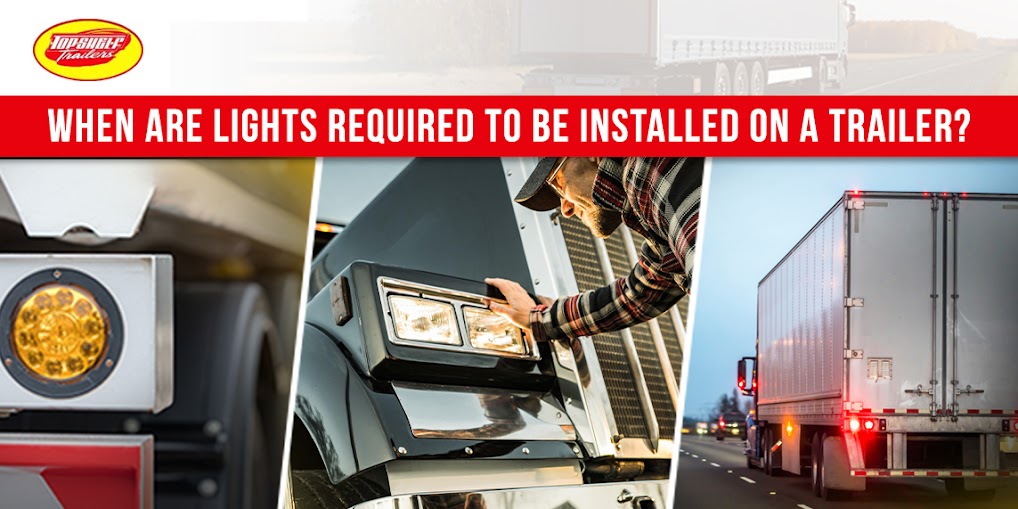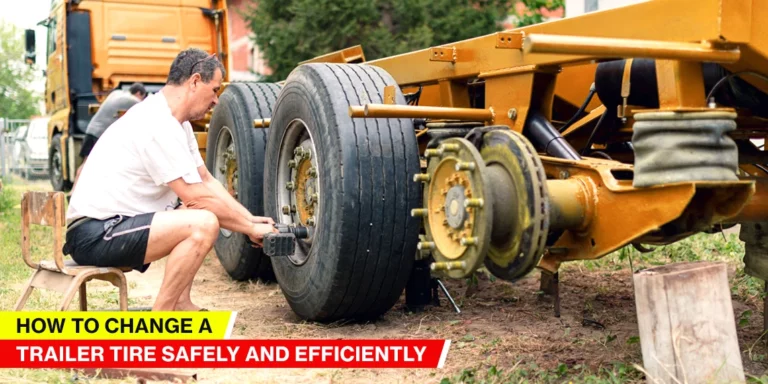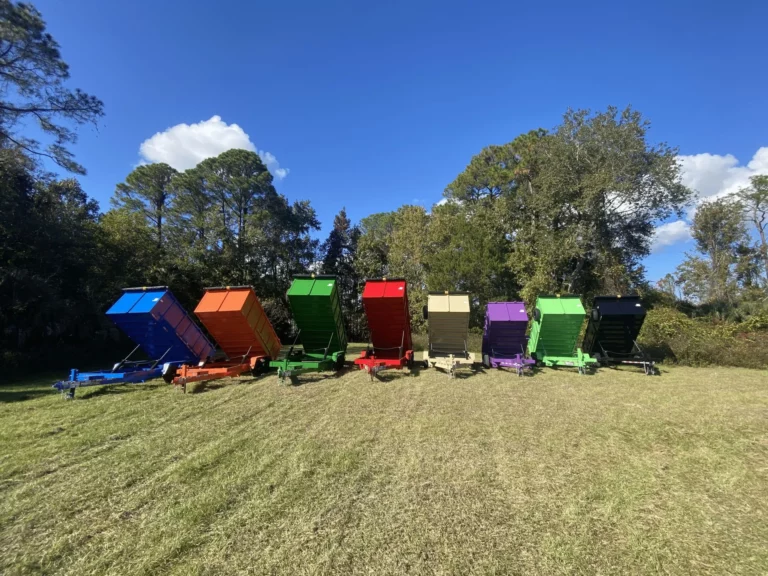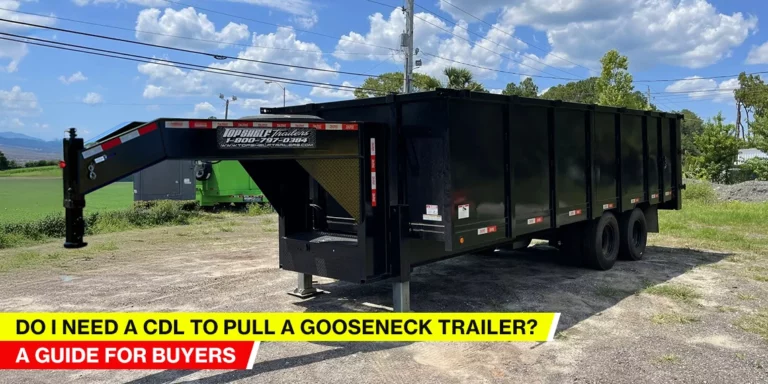We don’t intend to make light of the situation, but it’s a bright idea to keep your trailer truck visible on the road.
Lights for a trailer serve the purpose of alerting other drivers about your presence on the road. As per federal norms, trailer trucks come with at least one tail lamp, brake lamp, side marker lamp, and reflex reflector. You will have to install more lights depending on the laws in your state and the size of your trailer.
There’s no denying that visibility and safety are important. But we believe you are reading this blog to avoid getting pulled over for not having the necessary trailer lights. If you are considering investing in or building a trailer, we recommend you keep things legal when shopping for the right lights.
When are lights required to be installed on a trailer?
Trailer trucks, much like every other vehicle, need lights to ensure road safety. It helps the nearby drivers identify the trailer’s position and size under all weather conditions. Proper visibility contributes to reducing road accidents.
This blog will discuss the legal regulations for trailer light installation. Furthermore, we will explain the necessary and different types of lights. The blog will break it down for your comprehensive understanding.
Do All Trailers Need Lights?
All trailer trucks come with lights for visibility and road safety. As per federal law, your trailer must only hit the road if it features stop lights, turn signals, tail lights, and reflectors. Their purpose is to provide on-road safety and visibility.
Although trailer light regulations might differ from state to state, the necessity of having some form of lighting remains constant. Diverse trailer sizes call for distinct lighting setups to adhere to safety standards.
Trailers with smaller dimensions can have basic lights like tail, brake, and turn signals. However, larger trailers need extra lighting to improve visibility. These requirements guarantee that every trailer has the necessary visibility features.
We recommend you follow state and federal trailer lighting regulations to avoid potential fines. Federal standards define the lighting requirements for trailer trucks. They cover everything related to trailer lighting, from the fewest lights to their suggested positions.
Most states adhere to these standards, but a few others have to do with slight rule variations. You must check with these regulations on a routine basis to remain updated on any changes in the rule-book. It will benefit you in maintaining compliance and supporting both legal adherence and road safety.
Specific Trailer Light Explained
| Light Type | Placement on Trailer | Function |
| Tail Lights | Rear corners | Indicate presence at night |
| Brake Lights | Rear center | Illuminate when braking |
| Turn Signals | Rear & side (some trailers) | Indicate lane changes |
| Reflectors | Sides & back | Increase trailer visibility |
| License Plate Light | Above/beside plate | Required for nighttime visibility |
When are lights required to be installed on a trailer? Before that, you must develop a complete understanding of the different but necessary lights. Diverse trailers need distinct lighting setups to follow the federal safety standards.
- Tail Lights—The tail lights or warning lights are at the back of the trailer. You can activate them by turning on the trailer’s headlights.
- Stop Lights—These are also popular as brake lights and are available on the rear of the trailer. Each time your trailer hits the brakes, the stop lights come into play to warn other drivers of your pace.
- Turn Signals – These flickering lights start functioning when you change lanes. They are also important at night or during severe weather conditions.
- Rear Reflex Reflector—These lights are key in more extensive trailers than 80 inches. Such vehicles necessitate rear reflex reflectors since they do not rely on their own lights. They mirror the headlights of the approaching car.
- Side Reflex Reflector—Trailers often feature side reflex reflectors to benefit pedestrians and cyclists. These trailer lights help them identify the trailer on the road.
- License Plate Lamp—The license lamp is another light available on the trailer. It provides adequate illumination over the license plate to make it visible to law enforcement at night.
Light Requirements for Different Trailer Types
Trailer lights alert other drivers to their position and pace on the road. To be legal, your trailers must always feature at least one tail lamp, brake lamp, side marker lamp, and reflex reflector.
Depending on the size of your trailer and the laws in your state, you may need more lights to ensure road safety.
| Trailer Type | Lighting Requirements | Additional Notes |
| Under 80 inches wide | Tail lights, brake lights, turn signals | Must be visible from 500 feet |
| Over 80 inches wide | Clearance & ID lights | Required for wider visibility |
| Over 3,000 lbs GVWR | All standard lights + reflective tape | Reflectors every 10 feet along sides |
| Towing in rain/fog/night | Functional lights required | Non-functional lights can lead to fines |
1. For Trailers Less Than 80-Inches Wide
If your trailer measures less than 80 inches wide, you must consider investing in the following trailer lights:
- Two tail lights
- Two stoplights
- Two turn signals
- License plate light
- Rear side reflectors
- Rear side marker lights
- Front-side marker lights
- Front-side marker reflectors
However, if the dimensions of your trailer are less than 6 feet long, you don’t have to consider the trailer marking lights or front side reflectors.
Also, if you own a trailer less than 30 inches wide, you will need one tail light, brake light, and reflector in the rear. We recommend putting them in the middle of the trailer instead of the outer edge.
2. For Trailers 80-Inches or More in Width
In case your trailer weighs less than five tons and measures up to 80 inches wide or wider, we recommend you work with the following requirements:
- Two turn signals
- One license plate light
- Two stoplights
- Two tail lights
- Two back reflectors
- Two marker lights – back side
- Two marker reflectors – front side
- Two reflectors – rear side
- Two front-side marker lights
- Two front clearance lights
- Rear identification lights
- Two rear clearance lights
One anomaly to these lighting requirements is if you are towing a boat trailer. If that is the case, you must get dual-face lights with red on one side and yellow on the other. These are for the front and back clearance lights.
3. For Trailers Shorter Than 30-Feet Long
We have provided the lighting regulations for trailers measuring 30 feet or less in length.
- Two stoplights
- Two turn signals
- Two tail lights
- One license plate light
- Two back reflectors
- Two marker lights – front side
- Two reflectors – rear side
- Two marker reflectors – front side
- Two marker lights – front side
- Two back clearance lights
- Rear identification lights
- Two front clearance lights
- In addition to these lights, trailers of this size require conspicuity treatments.
Temporary Trailer Light Kit
A temporary gooseneck trailer light kit is the makeshift solution you opt for without a high-functioning utility trailer light system. They can be very beneficial if you add lighting to your trailer for short-term use.
It includes easily available components, such as clamp-on lights, work lights, or even reflective tape. You must wire them together to get the simple tail and brake light functions on the trailer. This will contribute to ensuring better visibility while towing.
We have mentioned the key points about temporary trailer lights and reflectors:
- Not Intended For Long-Term Use: Temporary trailer lights, due to their makeshift nature, fail to withstand the rigors of continuous towing and often fail to meet all safety standards.
- Basic Functionality: They provide the fundamental and essential lighting functions, like brake lights and tail lights. However, you will miss out on features like trailer side lights or turn signals.
- Easy Installation: Temporary lights promise quick attachment to the trailer with magnets, clamps, or adhesive. Thus, you don’t need extensive wiring and tools.
Components Used:
- Work lights: Temporary trailer kits contain components like portable work lights and a suitable mounting bracket.
- Clamp-on lights: Moreover, there are camp lights that you can wire to the trailer frame. They can deliver basic lighting functions.
- Reflective tape: There’s also reflective tape that promises high visibility. You can apply it to the trailer to improve your visibility at night.
When To Use Temporary Trailer Lights:
- Emergency Situations: You can use it during crises, such as when regular lights are faulty before towing.
- Short-Term Use: People also find temporary lights useful when they need temporary towing.
- Testing Purposes: You can use them to check if you have proper wiring before installing permanent lights.
Removable Trailer Lights
A removable trailer light is a light set that you can remove from the trailer without much hassle. They promise easy convenience for clearing and cleaning. They are beneficial if your trailer is often subjected to harsh environments.
Removable trailer lights put a stop to corrosion, thereby extending the lifespan of the lights. We have discussed the key points about removable dump trailer lights:
1. Corrosion Prevention
The fundamental benefit of removable trailer lights is the option for detachment. It will allow you to wash, clean, and inspect them for damage. You will be better equipped to prevent them from getting rust and corrosion.
2. Easy Maintenance
Taking off the lights streamlines the cleaning process, allowing you to access all parts of the light fixture. You don’t have to contort or reach difficult areas on the trailer to clean.
3. Design Features
Removable trailer lights feature a quick-disconnect mechanism resembling a plug or a latch. These design features allow for fast attachment and detachment.
4. Applications
These lights bring value to boat trailers, Jet Ski trailers, and other trailers often exposed to water. Furthermore, they can help trailers that have parking outside.
Choosing the Right Trailer Lights
The best trailer lights ensure safety and visibility. Thus, we recommend you take the time to explore various dump trailer manufacturers. It will help you get the best option before hitting the road. They can secure the visibility and safety of your trailer no matter where your travels may take you!
We have detailed a few tips on how to find the right lights for your trailer:
1. Determine Your Needs
Before deciding on the best trailer for your business, focus on the size and weight of the items you wish to carry.
2. Research Different Types of Trailers
Explore the available trailer types, such as utility trailers, flatbeds, cargo-hauling enclosures, and more.
3. Look Into Features and Accessories
When buying trailer trucks, you must focus on the available features and accessories in each trailer. Options include tongue jacks, brakes, and hitches, among others.
4. Consider Capacity Limits
All trailer trucks have respective load limits for different materials or objects. Thus, check the capacity limits of your trailer type in advance to avoid any unwanted experience down the line!
5. Examine Safety Ratings/Certifications
You must also ensure your trailer choice complies with the necessary state and federal safety standards. This will benefit you in some areas and give you peace of mind!
Maintaining Trailer Lights
Now that we have discussed in great detail when lights must be installed on a trailer, it’s time to move on to trailer light maintenance. It involves cleaning the wiring connections, bulbs, and ground wires. It ensures all lights work as per capacity and replaces any faulty components if necessary.
We recommend you run by plug connection to the tow vehicle to find any trailer light repair issues. Maintenance will help you address any vehicle’s electrical system or wiring harness issue.
Visual Inspection
- Bulb Check: Assess each bulb for signs of discoloration, damage, or burnout. Replace the faulty bulbs immediately.
- Lens Condition: Check the lenses for dirt or crack buildup; clean if necessary.
- Wiring Inspection: Check the wiring harness for exposed or frayed wires, loose connections, or signs of corrosion.
- Ground Wire Check: Open your eyes for the wrong ground wire attachment or corrosion.
- Turn Signals: Run both left and right turn signals to determine if they flash correctly.
- Brake Lights: Try the brake lights to see if they illuminate when applied.
- Tail Lights: See if the tail lights run at maximum capacity.
- License Plate Light: Check the illumination of the license plate light.
Frequently Asked Questions:
1. When Is A Trailer Required To Have Brake Lights?
All trailers must come with brake lights when they hit the public roads. They need brake lights irrespective of their size and dimension. You must use them to behind you when you are braking.
2. Do Small Trailers Need Lights?
Small trailers must also feature lights, as per state and federal law, since all trailers must have lights to ensure road safety. Regardless of their size, they must use lights to indicate their presence on the road.
A Future-Ready Approach with Top Shelf Trailers
There’s no denying that trailer light installation is a crucial investment. It provides safety, efficiency, and long-term reliability. When are lights required to be installed on a trailer?
You must do some homework if you seek to modernize your fleet of trailers. The proper gooseneck trailer lights setup can help you optimize your existing revenue. You can leverage your car hauler trailer lights to ensure your trailers commute while in a secure fashion on the road.
At Top Shelf Trailers, we can assist you in overseeing a full-scale rollout or delivering extensive guidance. You are not alone in entering the vast world of dump trailers. Our team is here to provide all the necessary support to help you get the most out of your trailer.





